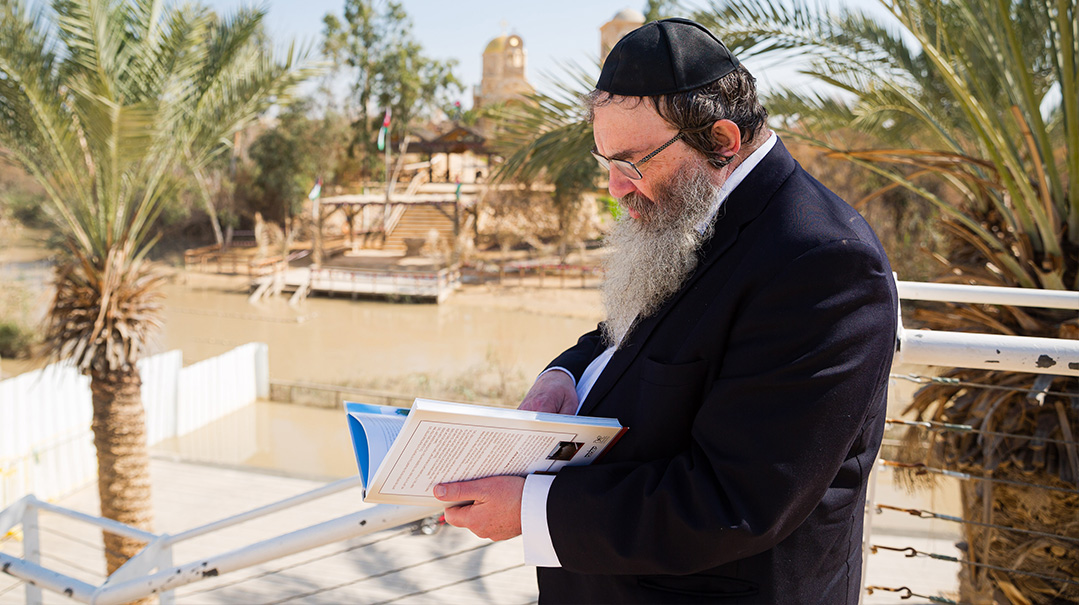Where Our Fathers Left Off

Rabbi Yehudah Landy retraces ancient footsteps from the Jordan Valley to Beit She'an

Photos: Elchanan Kotler
Although the modern-day baking-hot town of Beit She’an is almost 100 percent Jewish, the ancient city was a center of pagan life in the Land of Israel, foremost among the Hellenistic city-states spread across the Roman Empire – its preserved remains like an eerie, open-air museum to the Roman way of life. Does that make it shemittah-free?
If Yerushalayim is the beating heart of Eretz Yisrael, then the Jordan Valley, whose red mountains fill the windscreen as we leave the capital behind, is the country’s spine.
While the cardiac analogy is actually a midrash that refers to the spiritual centrality of the Holy City, the latter comparison was a staple of early Israeli military thinking, not Chazal.
But drive north up Route 90 — at 480 kilometers, or 300 miles, Israel’s longest road — and the similarity is hard to miss.
For while the mountain ridge rising on the left, leads to Yehudah and Shomron in the country’s center, the east bank of the Jordan River on the right — today, the Hashemite Kingdom of Jordan — holds the second half of ancient Eretz Yisrael.
That insight, along with many others, is courtesy of my passenger and guide for the day, Rabbi Yehudah Landy. A noted author and expert on both Jewish history and gevulos ha’Aretz — determination of Eretz Yisrael’s halachic borders — Rabbi Landy is in a league of his own as a tour guide. Nothing compares to hearing a talmid chacham equally at home in the Talmud Yerushalmi and in archaeology.
As we head north under a Mediterranean-blue sky, it’s to tell the story of one of the most important “vertebrae” on the country’s backbone: the ancient town of Beit She’an, and its connection to shemittah.
Water Ways
The Beit Ha’aravah junction on Route 90, known as the “Kvish Habikah” (“valley highway”), is something out of a Marlboro advert.
The road from Jerusalem winds down past the Bedouin encampments, past the signs indicating the distance to sea level and suddenly arrives at a T-junction in the desert. One fork goes left, all the way to Metula on the Lebanese border, the other runs south to Eilat.
“Turn off here,” Rabbi Landy signals, two minutes after we’ve taken the left. “It’s one of the only national parks in Israel that has free entry, and it’s the place where the Jewish People crossed the Yarden when they entered Eretz Yisrael.”
Qas’r Al-Yahud — meaning “Fortress of the Jews” in Arabic — is the name of the site. A clutch of churches and flags belonging to various Christian orders signals the place’s theological importance to those groups, but what interests us is beneath the surface.
“There, under one of these churches,” says Rabbi Landy with a gesture, “are the twelve stones that Bnei Yisrael brought out of the Yarden when they crossed.”
The miraculous crossing of the Jordan — like its better-known cousin, Kri’as Yam Suf — was accomplished by splitting the waters. Tanach records how Yehoshua instructed twelve men to carry stones out of the petrified river to leave as an “eternal memorial” for the supernatural events.
These stones were placed at a place called Gilgal, “at the eastern end of Yericho,” where the nation camped after the crossing.
“Look across — here we are to the east of Jericho,” says Rabbi Landy. “But we know of the location from the Madaba Map, a sixth-century mosaic found in Jordan with inscriptions in Greek that shows that as late as 1400 years ago, those stones were still visible here.”
Madaba — called Meidva in the Torah — is itself testimony to the deep Jewish roots of the other side of the Jordan known as Eiver HaYarden.
Meidva was conquered from Sichon, king of the Emorites, by Moshe Rabbeinu, and changed hands repeatedly over the centuries as Jews and Moabites fought over it. It was conquered by Yochanan, who was Kohein Gadol and grandson of Mattisyahu, leader of the Chashmonaim.
Oops! We could not locate your form.







